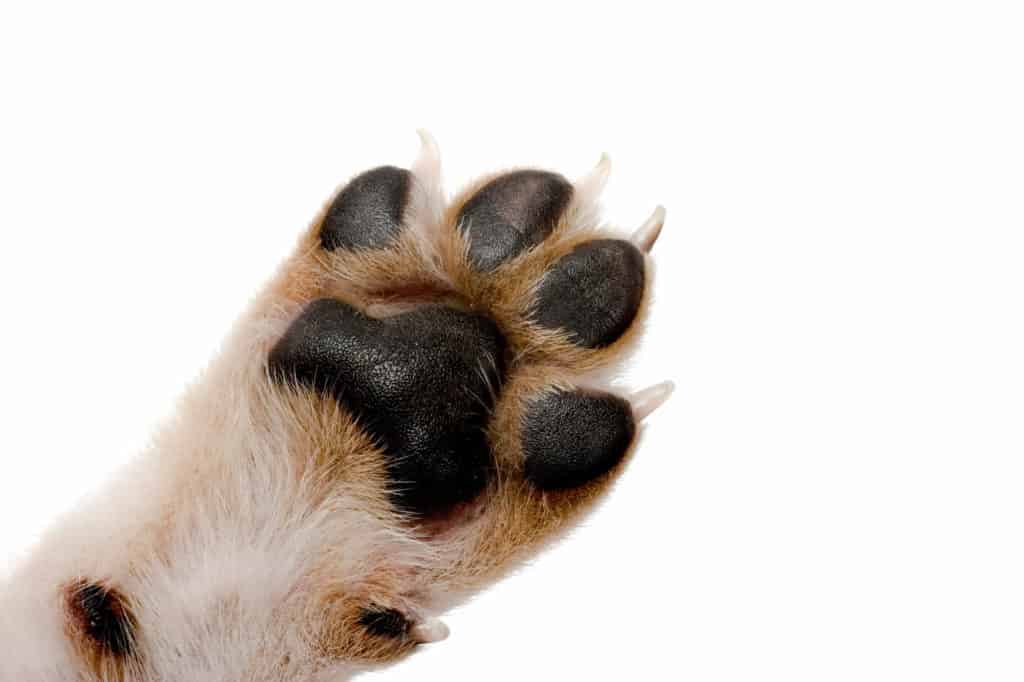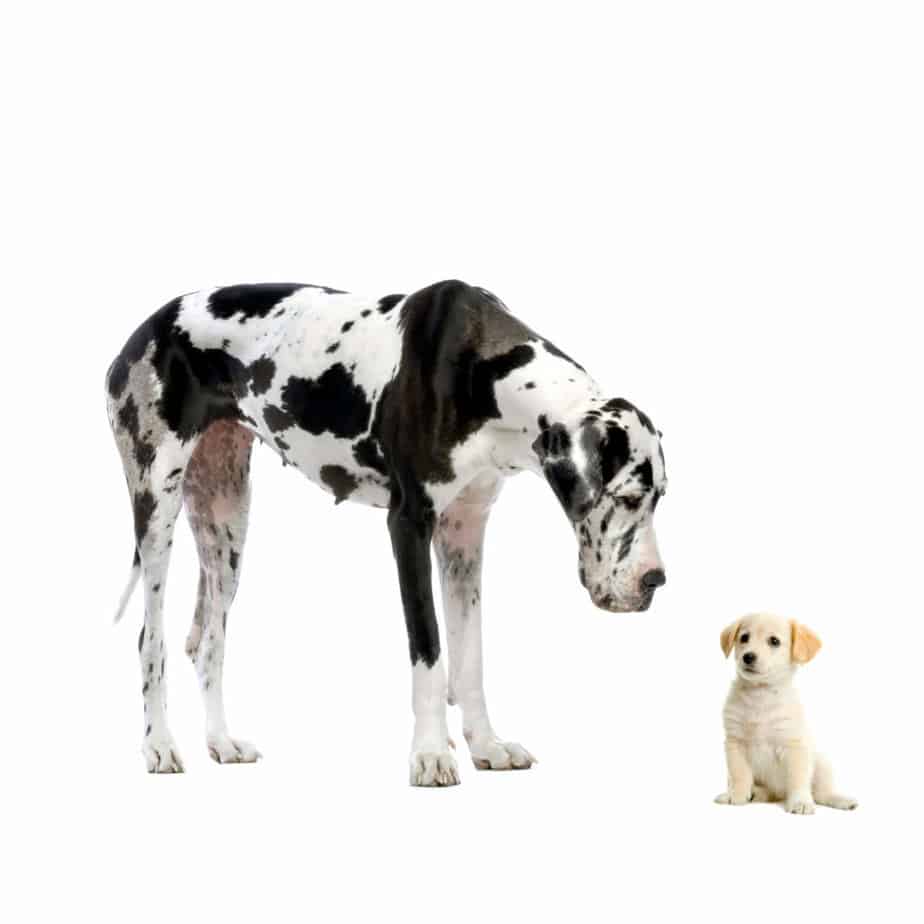Puppies' paws will grow as the puppies grow. They grow at a consistent rate that is proportional to the size of the dog, giving the impression that they didn’t grow.
However, thanks to this growth pattern, you can technically use the paw size to guess how big your dog will grow, although it’s not the most accurate method when compared to weight estimation.
One of the loveliest things about puppies is their tiny little paws. But do puppies paws grow consistently?

Do Puppy Paws Increase in Size As They Age?
Some people think that puppies are born with full-sized paws since puppies' paws are usually disproportionately larger than the puppies themselves, but this is not true.
If you take a close look at the size of a newborn puppy, then compare its measurements to the paws of the same puppy when he or she becomes 3 months old, you’ll realize that the paws have grown.
Similarly, you can keep comparing the size of your puppy's paws as they grow, whether by measuring their length, width, or circumference, and you’ll find that the paws keep growing.
This is because puppy paws grow as your dog continues to grow, but not at the same rate, so the oversized paws may seem like they’re not growing at all.
Helpful Dog Training Resource:
For help with training your dog, you should take a look at The Online Dog Trainer by Doggy Dan. Doggy Dan is an expert Dog Trainer based in New Zealand. His online resource contains Hundreds of Excellent Dog Training Videos that will take you step-by-step through the process of developing a healthy, happy well-behaved dog.
At What Rate Do Puppies’ Paws Grow?
Ideally, the rate at which your puppy’s paws will grow is quite unpredictable. In other words, it doesn’t increase by constant increments per a certain amount of time.
Instead, like the rest of the dog’s body, growth happens in phases throughout the first months of their lives.
This means that the paws will increase in size at different times, mainly depending on the puppy’s age.
In addition to age, the paw growth rate will also vary depending on various factors, such as:
- The breed of your puppy
- Whether your puppy is a boy or a girl
- Genetics (some dogs are larger than others within the same breed)
- The kind of nutrition provided during the growth phase
- Certain mutations and growth hormone abnormalities
Do Puppys’ Paws Show How Big They’ll Get?
There’s an ongoing myth that we can guess how big your puppy will be when it grows based on the size of its paws at certain times of its puppyhood.
Surprisingly, this old tale does make some sense!

If you take a closer look at the relative size of the paws among puppies of different breeds, you’ll notice that puppies of large dog breeds, such as Great Danes, usually have oversized paws.
As for small dog breeds, they will usually have small paws because they don’t need large ones to support their size as they grow.
This rule usually doesn’t apply when it comes to mixed breeds and hybrid dogs.
For instance, You can find some mixed puppies with disproportionately large paws that grow to a fairly small sized body as they become adults.
How Does the Puppy Paw Size Estimating Method Work
While this method is not entirely accurate and has many flows, you can use it as a fun and relatively easy way to estimate the size of your puppy as it becomes an adult.
For starters, you should remember that you can only get relatively reliable results with this method if your dog isn’t a hybrid.
In most cases, young dogs will grow to the size of their paws and not the opposite.
For that reason, if your puppy’s paws look disproportionately large when compared to the size of its body, it means that there’s still room for them to grow larger in size.
On the flip side, if your puppy’s paws look like they’re as big as they should be when compared to the body, it means that your dog has most likely completed its growth cycles.
Is There An Accurate Method to Predict the Puppy’s Adult Size?

As you can see, the previous method can let you know if your dog can still grow, but it doesn’t show you how much growth you should expect or when it’s going to happen.
Ideally, most puppies will reach exactly half of their final adult size by the time they’re 14 to 16 weeks old.
In other words, if you have a Labrador Retriever that is around 10 to 12 inches long at such an age, your dog should be around 20 to 24 inches long by the time they’re fully grown.
If you want a more accurate method that can give you a reliable estimation of your adult dog’s growth, you should consider their weight.
Here’s a breakdown of how to estimate the size of your puppy as an adult, depending on the size of the breed:
- Small breeds: Multiply puppy’s weight at 6 weeks old x 4
- Medium and Large breeds: Multiply the puppy’s weight at 14 weeks old x 2.5
When Do Puppy’s Paws Stop Growing?
Like the rest of the dog’s body, the paws may stop growing at unpredictable times, depending on the breed of the dog and other genetic and nutritional factors.
Despite that, there’s a well established rule that puppy paws will stop growing by the time they fit the size of your puppy’s body.
This means that, in some cases, your puppy’s paws can be the last thing to stop growing in their bodies.
Ideally, most dogs will stop growing by the time they’re around 9 to 11 months old.
Depending on the growth spurts and patterns of your puppy, the paws should stop growing any time between 6 to 11 months old.
Helpful Dog Health Resource:
Note: Our Health is #1 Priority. It should be no different for your dog. But you need to help him. The Ultimate Guide to Dog Health is the answer. This handy guide will help you recognize the symptoms of the health problems above. Get the knowledge to stay ahead of these terrible issues that can rob your lovely dog from vigor and life. Help your friend make it to 14 yrs+ without pain and suffering.
Do Male and Female Puppies Have the Same Paws?
Within the same breed, both male and female puppies should grow at very similar rates and also stop growing around the same time.
Females, however, will generally grow to a relatively smaller size than their male counterparts, and therefore, they should technically have smaller paws.
Yet, the difference between males and females is very small to show a significant variation between the two in that regard.

Paul has been creating content for the dog niche for many years. The information he shares comes his first hand experience growing up in dog lovers household and then owning multiple dog breeds of his own as an adult. Paul enjoys doing the hard research to collect, analyze and present our dogtemperament.com readers with the best answers to their questions.